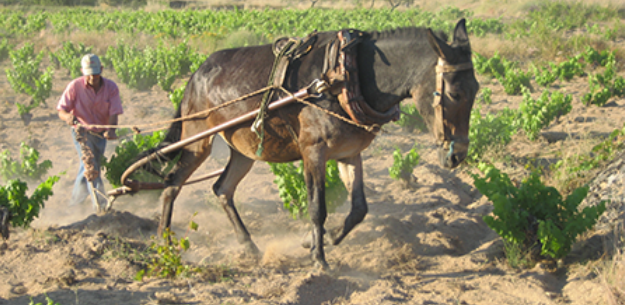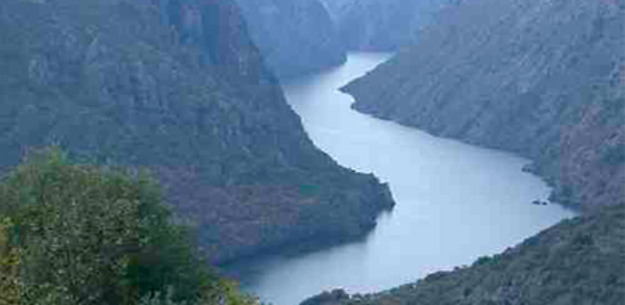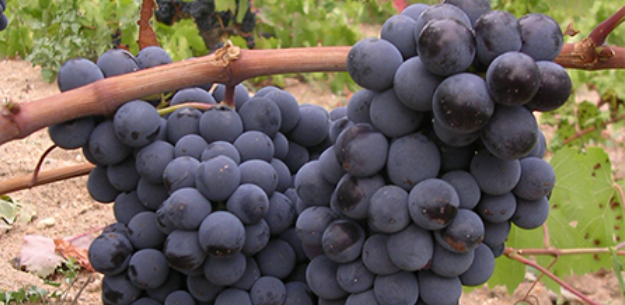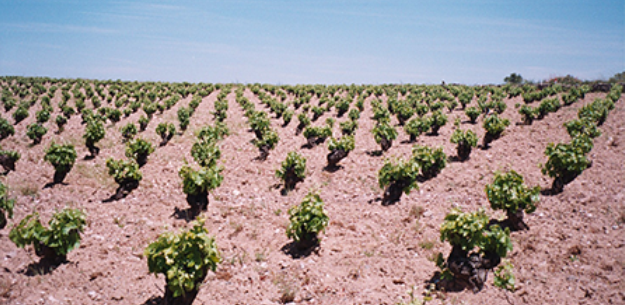.png.transform/rendition-xs/image_image%20(1).png)
Arribes DO Wines: a Hidden Treasure in Castile-León
The product of the breathtakingly beautiful scenery and more than two thousand years of history that has played out along the banks of the Duero River on the Spanish-Portuguese border in Castile-León, the wines of DO Arribes are pleasing palates both in Spain and abroad
The mighty Duero River, which stretches across the northern-central Iberian Peninsula from Soria to Oporto, has become virtually synonymous with the production of excellent wines, including those of famed Denominations of Origin Cigales, Rueda, Toro and Ribera del Duero. But just before crossing the Portuguese border, where the river goes on to lend its magic to that country's Port wines, the canyons of the Duero also breathe life into the wines of DO Arribes, a Spanish wine region forged thousands of years ago along the river's valleys and terraces as it weaves along the countries' border in the Parque Nacional de Arribes del Duero natural park.
Located in the northeast of the province of Salamanca and the southeast of the province of Zamora, this region was officially recognized as a Denomination of Origin in 2007. 380 of the 4,800 hectares of vineyards planted on its peneplains and dramatic riverbank are inscribed in Denomination of Origin Arribes, which represents seventeen wineries.
The wine making history here is attributed to either the Romans, or the pre-Roman Phoenicians, who sailed up the river from Oporto. According to Carlos Capilla Barreda, the Technical Director of DO Arribes, the region's true history was probably a combination of both historic attributions, meaning that this area was likely "a point where both penetrations fused together, which is why this territory is considered a reservoir of varieties with a great richness and diversity in types of grapes, typical of a transited area."
Capilla classifies the climate as Mediterranean – despite its more Continental/Atlantic location. Regardless, this translates to warm, dry summers and mild winters. The soils here are mostly sandy, with loose granite and quartz pebbles on a bed of slate, and the riverbanks are characterized by some rocky outcroppings. These climate and soil factors, when combined with the native grape varieties, are what Capilla says most differentiate the wines of DO Arribes from others nearby.
Juan García, emblematic red grape
The most characteristic and abundant variety here is Juan García, a native red grape that, according to Capilla "has all of the necessary characteristics to open an important niche in a market that is continually demanding wines with clearly differentiated personalities." Other red grape varieties found here and authorized by the denomination are Tempranillo, Rufete, Bruñal, Garnacha and Mencía – while the DO's Regulatory Board is currently working on authorizing red variety Syrah. In terms of white grapes, the most important is Malvasía, which can be complemented by some Verdejo and Albillo.
Thanks to this range of varieties, all wine types can be found in DO Arribes (young and barrel-fermented whites, rosés, and reds of different ages – through Gran Reservas). White wines only account for around 10% of total production, and are overwhelmingly made from 100% Malvasía grapes. These wines are aromatic, with aromas of tropical and citrus fruits, as well as floral and herbal undertones of jasmine, rose, thyme and straw. The barrel-fermented versions exhibit some lactic and toasted notes, as well as enhanced structure and aromatic intensity. On the palate they possess an agreeable acidity and a slightly bitter finish.
For their part, Arribes' characteristic red wines, which account for some 90% of production, have traditionally been single-variety wines made from Juan García or, in lesser amounts, Tempranillo or Bruñal grapes. Capilla points out, however, that blends are becoming increasingly popular with wine makers, although these must contain at least 60% of one of the region's primary grape varieties (Juan García, Bruñal, Rufete or Tempranillo). These medium-intensity wines, in general, have pleasantly fruity aromas of plums, currants and black fruit, mingled with notes of vanilla, licorice, balsamics (eucalyptus), minerals, nuts and smoke – in varying intensities – in the barrel-aged versions. Capilla underlines their great capacity for barrel aging, during which time the wines develop "excellent structure, robustness and a long finish." He goes on to point out that these aged reds are the most popular among consumers.
And when Capilla talks about the consumers of DO Arribes wines, he is not just talking about people inside Spain. Some 25% of the approximately 400,000 bottles of wine produced here annually are exported, principally to countries including China, Japan, Germany, Italy, Switzerland, the United Kingdom, the United States, France, Ireland, Belgium, Holland, Denmark, Mexico and the Czech Republic, among others. To this end, the Regulatory Board has sponsored promotional campaigns overseas, created with the objective of continuing to expand European and Asian markets for DO Arribes wines.
The mighty Duero River, which stretches across the northern-central Iberian Peninsula from Soria to Oporto, has become virtually synonymous with the production of excellent wines, including those of famed Denominations of Origin Cigales, Rueda, Toro and Ribera del Duero
Adrienne Smith/©ICEX




- Image 1
- Image 2
- Image 3
- Image 4


